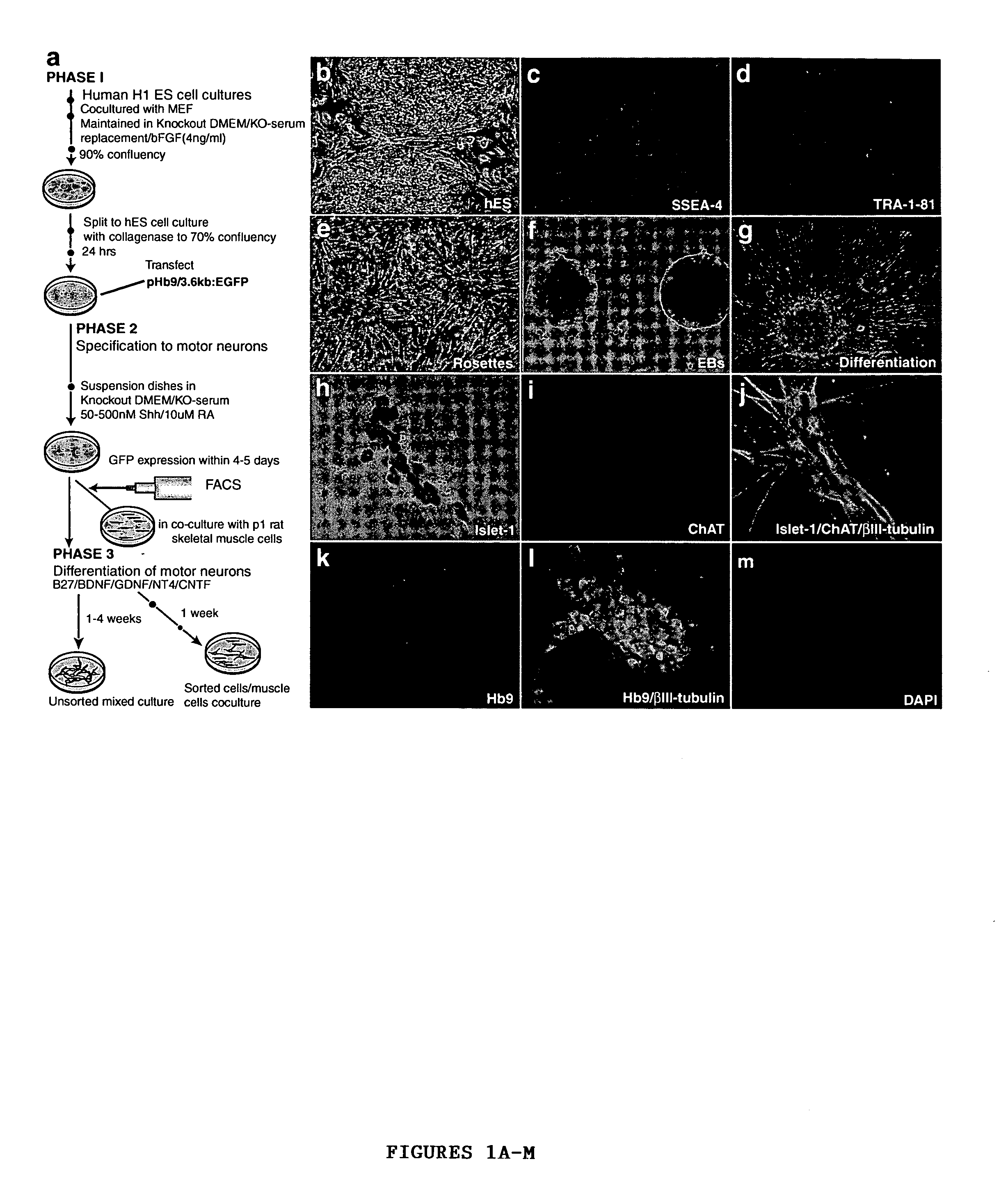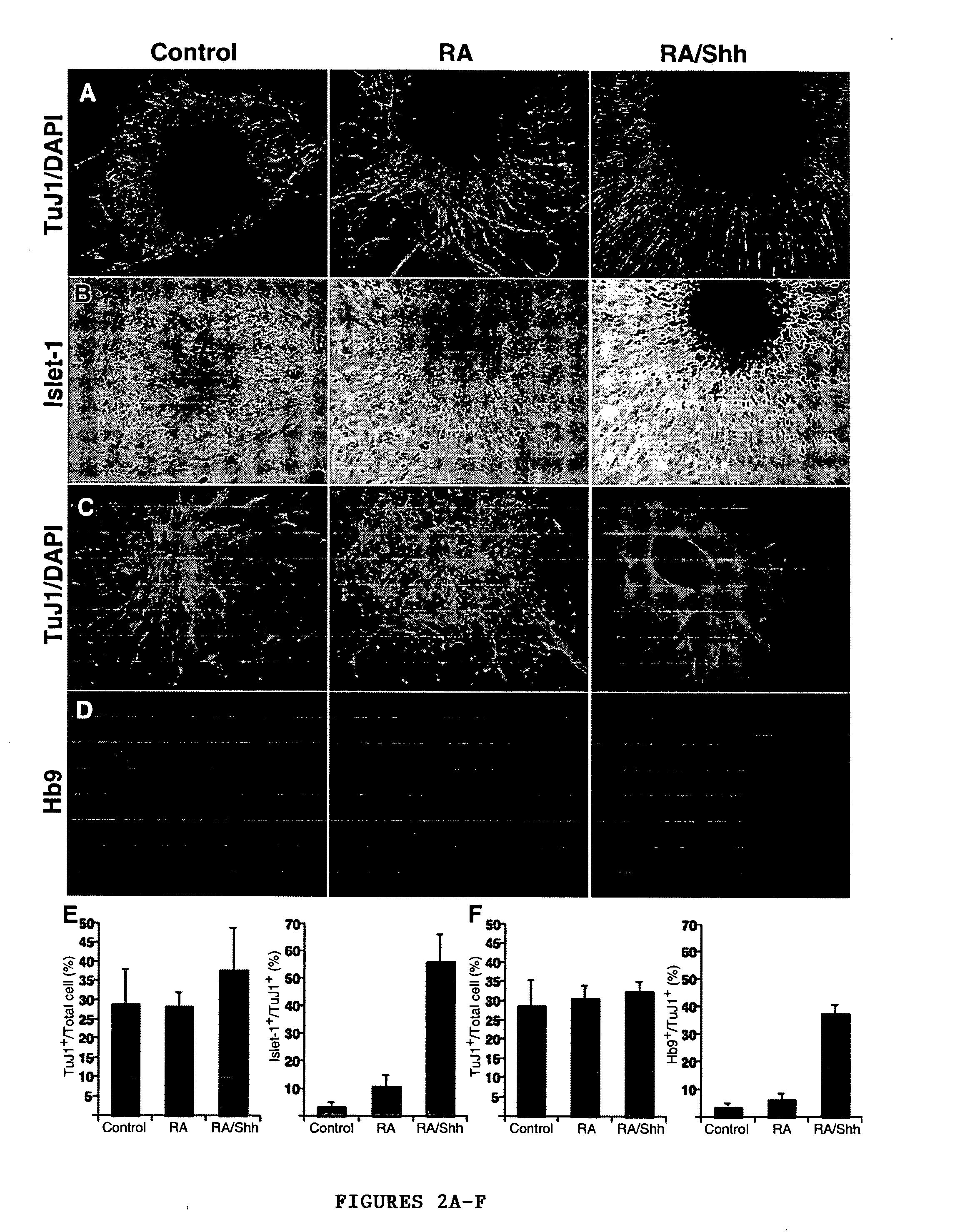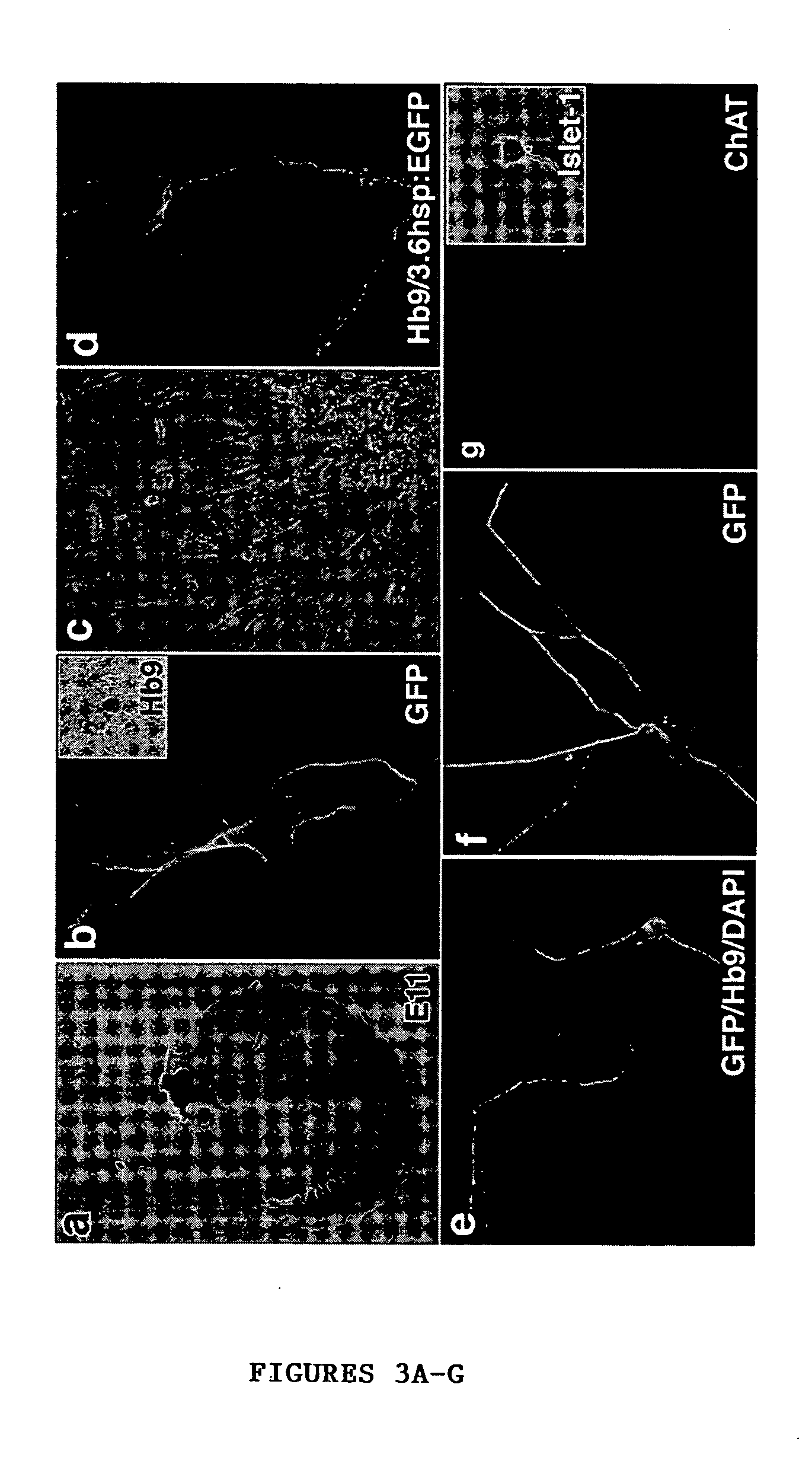Enriched or purified population of motor neurons and its preparation from a population of embryonic stem cells
a technology of embryonic stem cells and motor neurons, which is applied in the field of enriching or purifying the population of motor neurons, can solve the problems of not being able to selectively produce and isolate specific clinically important neuronal and glial phenotypes from hes cells, and no prospectively defined neuronal phenotype has yet been either induced or selected
- Summary
- Abstract
- Description
- Claims
- Application Information
AI Technical Summary
Benefits of technology
Problems solved by technology
Method used
Image
Examples
example 1
[0043] Source of hES
[0044] The hES cells were derived from the H1 line (Thomson et al., “Embryonic Stem Cell Lines Derived from Human Blastocysts,”Science 282:1145-1147 (1998), which is hereby incorporated by reference in its entirety). They were obtained from WiCell Research Institute, University of Wisconsin-Madison.
[0045] Example 2—Culturing and Passaging of hES Cells
[0046] Cells were maintained and passaged in co-cultures with mouse embryonic feeder cells (MEF) as per published protocols (Thomson et al 1998, which is hereby incorporated by reference in its entirety). Cultures are passaged every 7-14 days. To passage, hES cells were treated with collagenase type IV (200 units / ml) for 10 mins and scraped off the culture dish. The scraped cells were split 1:3-1:4 on MEF cultures in 6 well plates. The hES cells were fed every 24 hrs with KO-DMEM supplemented with 20% KO-Serum replacement (KO-medium) and bFGF (4 ng / ml) (Gibco). MEF cells for co-culture were established as follows: ...
example 3
[0047] Specification and Differentiation of Motor Neuron
[0048] A modified version of the protocol described in Wichterle et al., “Directed Differentiation of Embryonic Stem Cells into Motor Neurons,”Cell 110:385-397 (2002), which is hereby incorporated by reference in its entirety, was used for induction and differentiation of motor neurons from hES cells (FIG. 1A). For caudalization and specification to motor neurons, 90% confluent hES cell cultures were dissociated to form embryoid bodies (EB) in suspension dishes (Ultra low cluster 6 well plates, Corning) in KO-medium containing 10 μM all-trans retinoic acid and 100 nM of a modified version of the active N-terminal peptide of human sonic hedgehog (Curis, Mass.). Fresh RA was added every day and fresh medium along with SHH replaced every 72 hrs. After 6-8 days, differentiation of motor neurons was induced by plating the spheres formed onto poly-ornithin / fibronectin coated plates in DMEM / F12 supplemented with N2 (Gibco), GDNF (20 n...
example 9
[0058] Quantitative PCR (qPCR)
[0059] Samples in triplicates (25 ng total RNA) each for reverse transcription (RT)+samples and RT−control were prepared. These were first subjected to reverse transcription using Taqman RT kit (Applied Biosystems). qPCR reactions were done by using either SYBR Green PCR Master Mix or TaqMan universal PCR Master Mix (both from Applied Biosystems). Of the RT products, 1 / 50 the total amount was used for each qPCR reaction. Primers for En1 (Assay ID HsO0154977_ml) and Pax7 (Assay ID Hs00242962_ml) were ordered from assays-on-demand from Applied Biosystems. Primers for Oct3 / 4 and islet-1 were as follows: Oct3 / 4, Forward: cgaccatctgccgctttg (SEQ ID NO: 1), Reverse: gccgcagcttacatgttct (SEQ ID NO: 2)and islet-1, Forward: CTAATCTGAATGGTGCTGTTTCTATATTG (SEQ ID NO: 3), Reverse: CTCTCTTCCTGCGCTTTTGC (SEQ ID NO: 4). The average value of multiple RT+samples was normalized by using VIC 18S primers and TaqMan probe as an internal control. The values were expressed as...
PUM
| Property | Measurement | Unit |
|---|---|---|
| sodium-currents | aaaaa | aaaaa |
| length | aaaaa | aaaaa |
| fluorescent | aaaaa | aaaaa |
Abstract
Description
Claims
Application Information
 Login to View More
Login to View More - R&D
- Intellectual Property
- Life Sciences
- Materials
- Tech Scout
- Unparalleled Data Quality
- Higher Quality Content
- 60% Fewer Hallucinations
Browse by: Latest US Patents, China's latest patents, Technical Efficacy Thesaurus, Application Domain, Technology Topic, Popular Technical Reports.
© 2025 PatSnap. All rights reserved.Legal|Privacy policy|Modern Slavery Act Transparency Statement|Sitemap|About US| Contact US: help@patsnap.com



